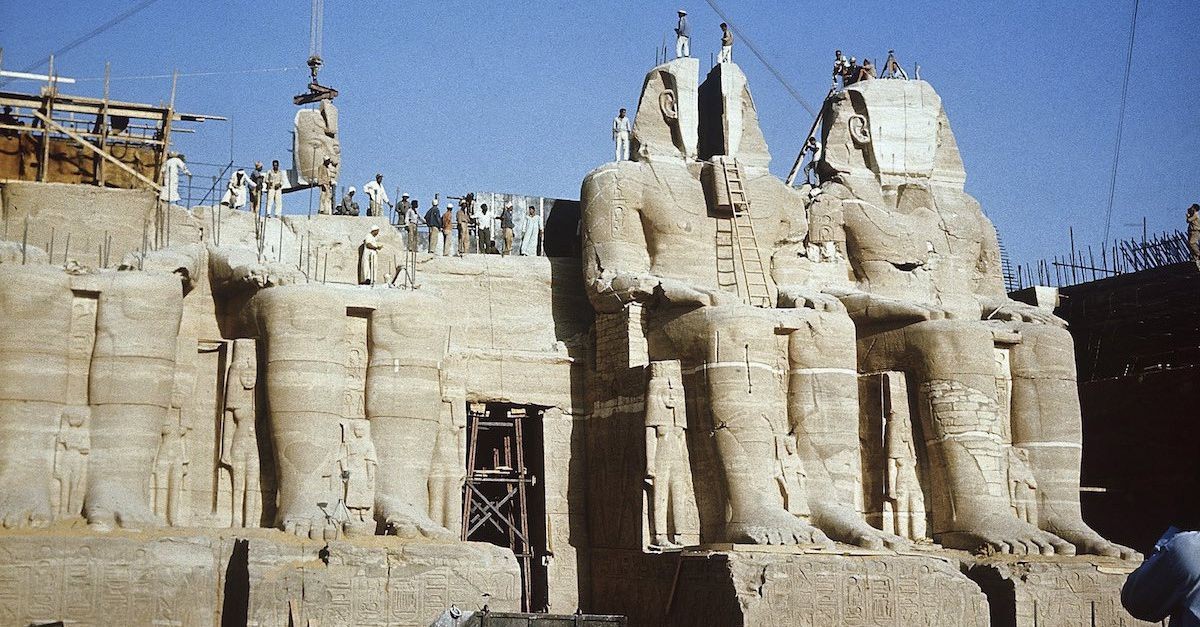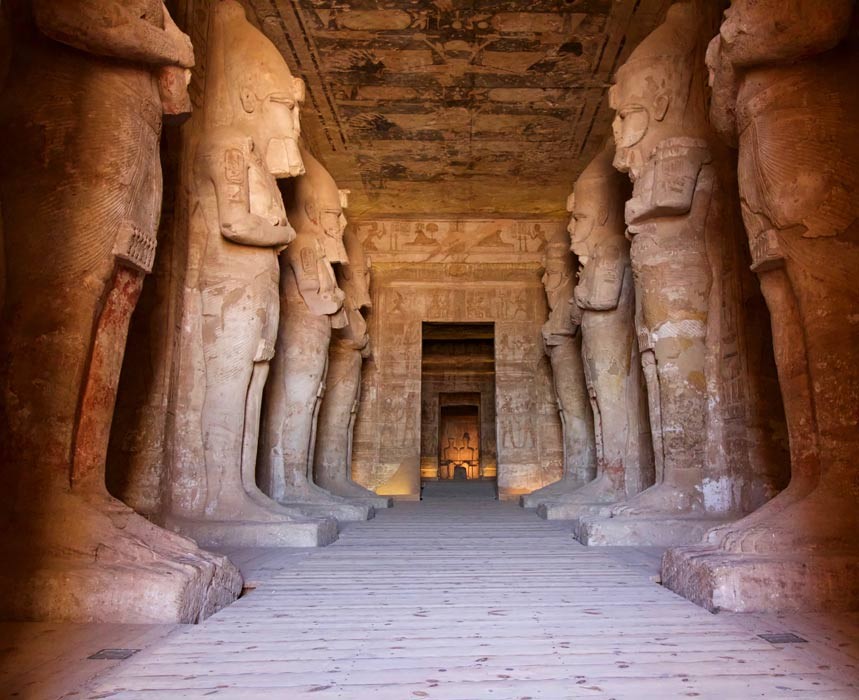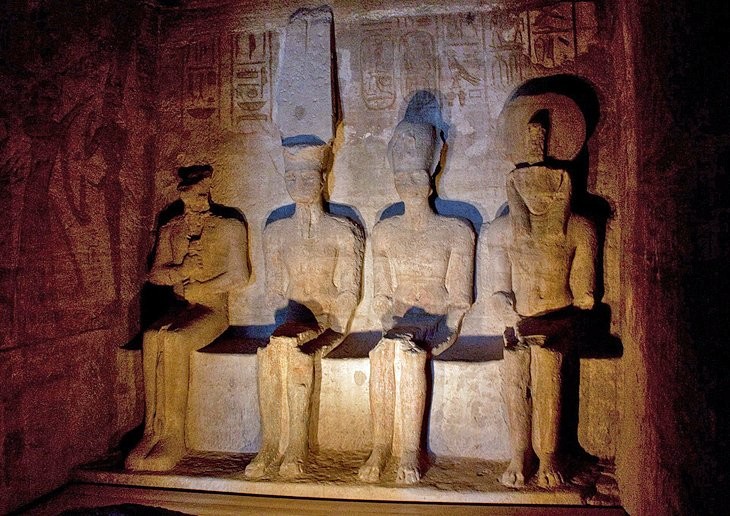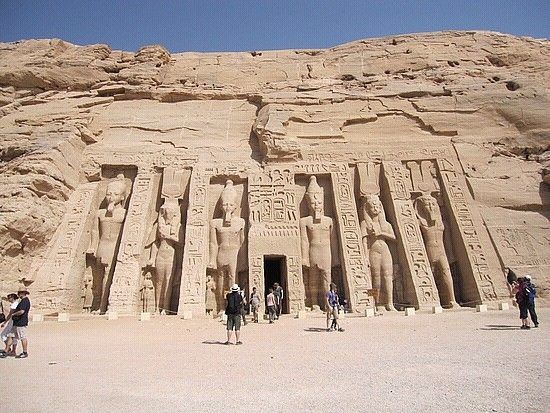Top 5 Facts about Abu Simbel Temple
Abu Simbel Temple is one of the temples that has gained international fame comparable to the fame of the Giza Pyramids, Abu Simbel consider one of the top Aswan attractions. Built by the greatest of kings, Ramses II, it was known as Ramses II Temple, the temple is divided into two temples, the largest edifice of King Ramses II and the smaller temple, the Nefertiti temple, built to his loved wife Nefertiti.
In this blog, we'll Enjoy the Abu Simbel tour while learning Abu Simbel's history, the most essential Abu Simbel facts, and what it looked like on the interior. So, keep reading…
Abu Simbel Relocation

In 1964, one of the largest initiatives in history was launched: the mission to save historic temples from the Nile's flood from burying this ancient civilization underwater so that the Egypt tours do not collapse. The Temple of Abu Simbel was among the temples rescued, and it was dismantled and relocated to its current location along with Lake Nasser.
Abu Simbel History of Relocation Process
In 1959, UNESCO received a response from the Egyptian and Sudanese governments requesting assistance in conserving the most valuable Abu Simbel temples, which would be permanently damaged due to the construction of the Aswan Dam. The Abu Simbel temple (Ramses II Temple and Nefertari Crossing) was rescued due to the contributions of international governments.
In 1960, international funds were collected for the rescue mission until the Swedish company Vattenbyggnadsbyrn resolved the knot on how to transport the temples. To transport the temple, the ceilings, walls, and sculptures had to be carefully cut so that they would not be harmed. Indeed, the temple's walls and statues were really cut into pieces weighing 20 to 30 tonnes. Many Swedish firms, led by Atlas Copco, Sandvik, Skanska Cement, and Syntab, took part in this massive and risky project.
Abu Simbel interior design
There are two temples. The Great Temple is devoted to Ramses II personally, while the Small Temple is dedicated to his wife Queen Nefertari. Shall we enjoy a quick Aswan day tour to Abu Simbel with an expert Egyptologist?
The Great Temple: Ramses II Temple

The Temple of Ramses II is regarded as one of the greatest and most spectacular temples in Aswan, as well as in Egypt travel packages and the rest of the world. It was constructed to house King Ramses II and the gods Amun, Ra-Harakhty, and Ptah.
At the temple's entrance are four massive sculptures of King Ramses II seated on his throne, surrounded by hieroglyphic decorations, representing King Ramses II's greatest victory in the Battle of Cadiz.
When you start your tour inside the great temple, you will find various rooms of Ramses II and several notable people. The last holy chamber is the most significant room, and it is regarded as a miracle. This chamber is always dark throughout the year, except for two days only when the sun shines the room. This miracle did not happen spontaneously! Rather, it happened after engineering, architectural and astronomical studies to adjust the timing of the sun’s perpendicularity to Ramses II sculpture face annually for thousands of years until now.
The relation of the Sunrise & Ramses II Temple

Every year, the sun rises for two days perpendicularly to the face of the Ramses statue in the last room, which is the sacred room of King Ramses II at the temple of Abu Simbel, since the temple's construction more than 3200 years ago till now! You shall book from Egypt day tours your trip to Aswan in one of these two days to amaze with this genius.
After much research, the ancient builders were able to construct the temple such that the sun would shine on Ramses II's sacred hall was on February 22, the anniversary of his ascension to the throne, and on October 22, the day of his birth.
During these two days, the sun shines on three sculptures (the statue of Ramses II, the statue of Ra the sun god, and the statue of Amon the king of the gods) in a passageway in the temple that is dark the rest of the year. The fourth and final statue of the god Ptah is always dark since he is the god of darkness and has never seen the light since its construction till today! A genuine miracle that must be seen!
The Small Temple: Nefertiti Temple

The Temple of Nefertari (Nefertiti) is the second temple inside the Temple of Abu Simbel, it was constructed in honor of the king’s deep love for Queen Nefertiti since Queen Nefertiti is his favorite wife. The temple is also known as the Temple of Hathor since it is dedicated to the goddess Hathor.
There are two towers inside the little temple, each with three sculptures, two of Ramses II and one of Queen Nefertiti. The most magnificent statue of Queen Nefertiti was sculpted wearing a long transparent dress and holding the clay tool (one of the key ceremonies that take place in the temple) and wearing the Hathori crown consisting of two feathers, in their midst the sun orb. This is Queen Nefertari's most gorgeous statue.
How to get to Abu Simbel from Aswan?
Most tourists pick between two options for getting to Aswan from Abu Simbel and vice versa from Aswan to Abu Simbel. The first way is to fly. Tourists resort to a simple day tour to Abu Simbel by flight from Aswan during times when their vacation is short, to shorten the time for more enjoyment as the flight takes around 30 min.
Another choice, and one that some tourists prefer, is to take the best Egypt Nile Cruises from Aswan to Abu Simbel Temple, from where you may enjoy the scenery of the numerous temples and Islands all the way till reaching Abu Simbel Temple.